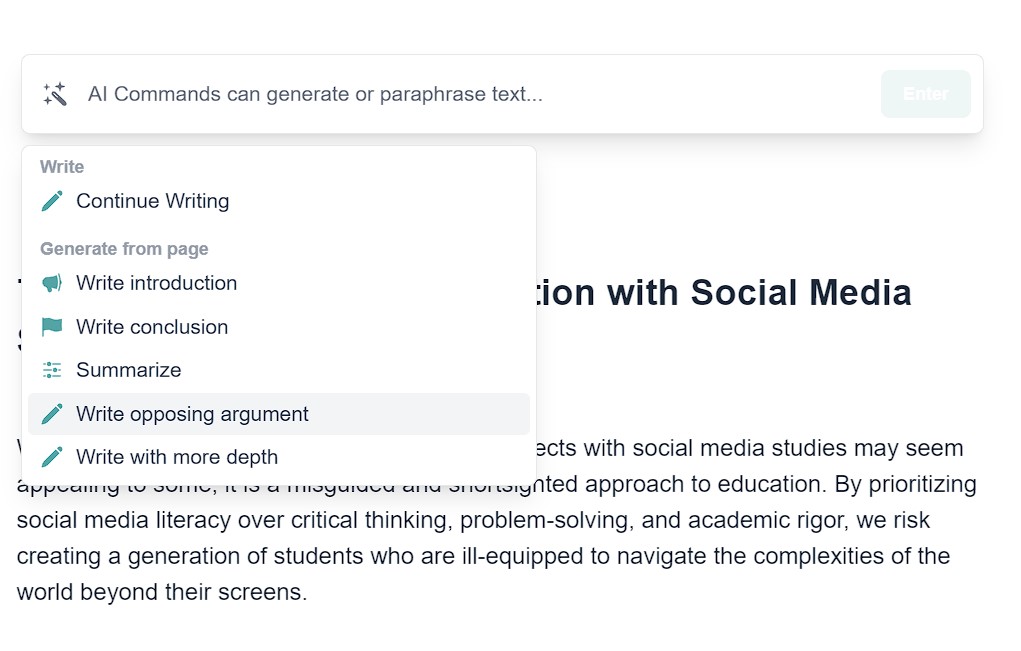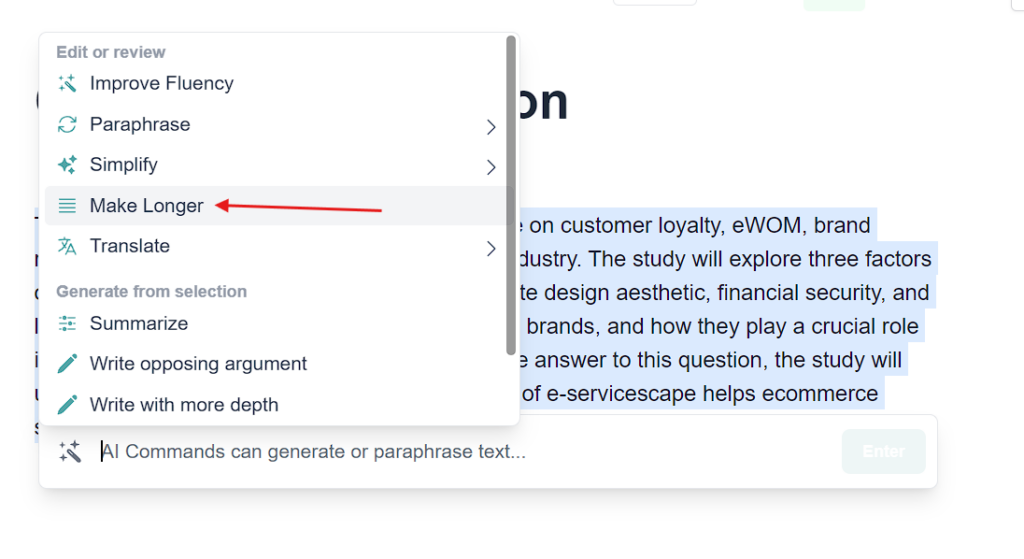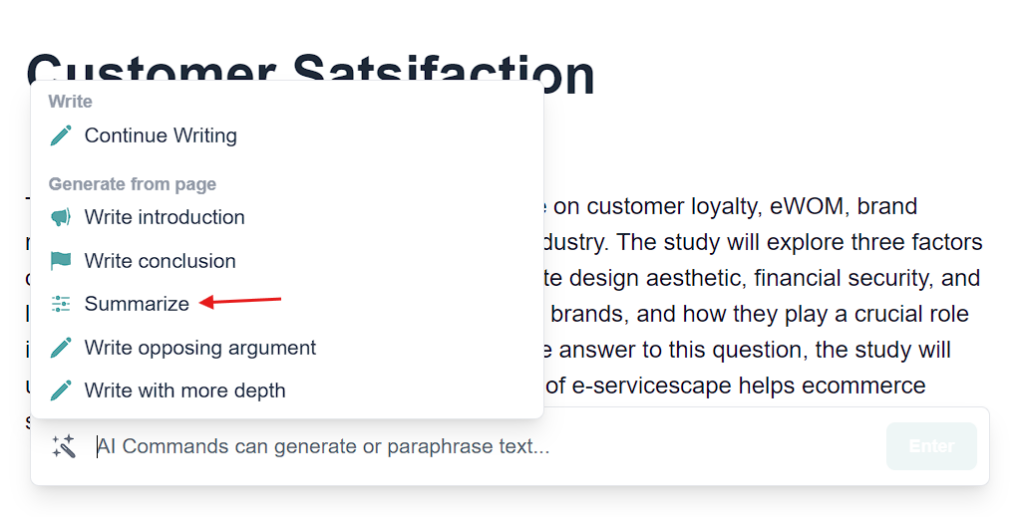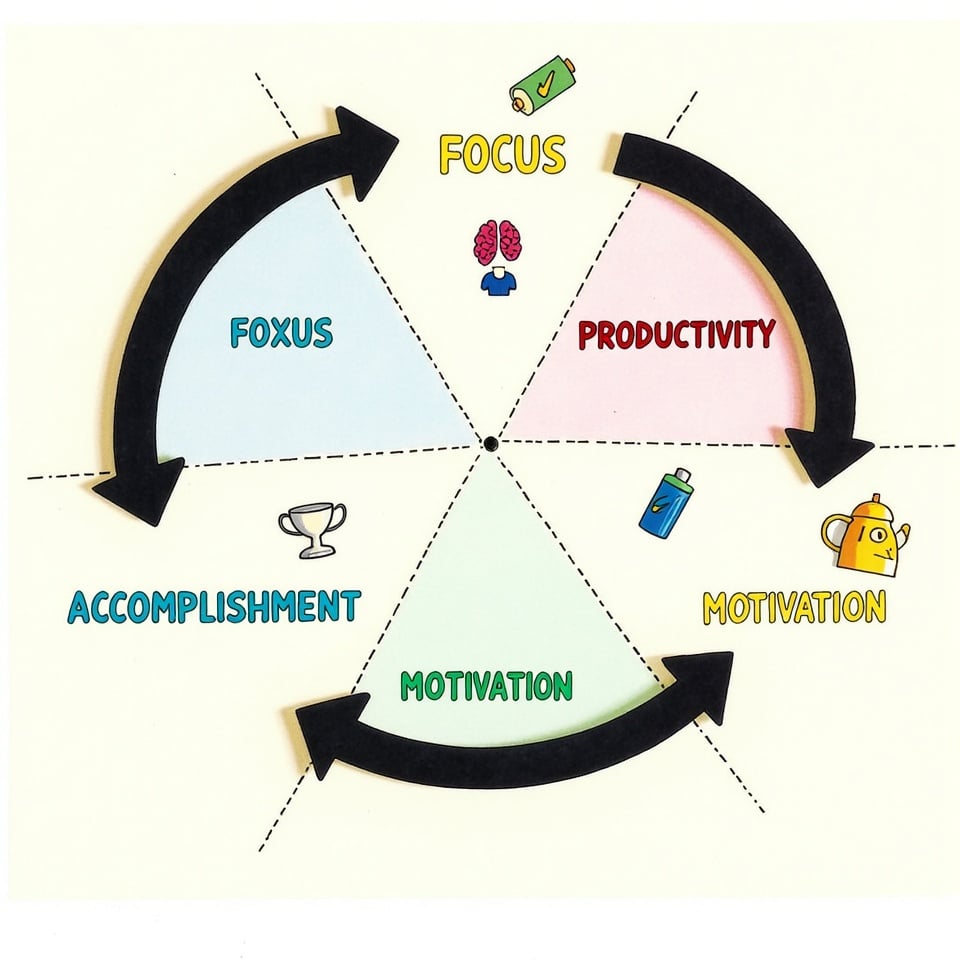An argumentative essay is a structured form of writing that presents a clear stance on a debatable issue, supported by factual evidence and logical reasoning. Unlike other persuasive essays, argumentative essays rely heavily on research and hard evidence to support their claims and refute opposing viewpoints.
The goal is not to be combative but to present a well-reasoned argument that convinces readers that the writer’s thesis is the most valid conclusion. This type of essay requires critical thinking, thorough research, and the ability to address counterarguments effectively.
By mastering the art of argumentative writing, students and professionals can develop crucial skills in analysis, persuasion, and effective communication, which are valuable in both academic and real-world contexts.
Table of Contents
What is an argumentative essay?
An argumentative essay is a type of academic writing that presents a clear position on a debatable topic and seeks to persuade readers of that position through logical reasoning and evidence.
It requires the author to investigate a subject, establish a stance, and defend it using well-structured arguments and relevant supporting information.
Structure and outlining of an argumentative essay
An argumentative essay follows a clear, logical format designed to present and support the author’s position effectively. The process of structuring and outlining such an essay is crucial for organizing thoughts and developing a compelling argument.
Here’s a comprehensive guide on how to structure and outline an argumentative essay:
- Choose Your Topic and Establish Your Position
- Select a debatable topic
- Determine your stance on the issue
- Create a Working Thesis Statement
- Formulate a clear, concise statement of your main argument
- Identify Main Points and Gather Evidence
- List 3-5 key arguments that support your position
- Find relevant facts, statistics, examples, and expert opinions for each point
- Consider Counterarguments
- Identify potential opposing viewpoints
- Plan how to address or refute them
- Organize Your Essay Structure
- Introduction:
- Hook: An attention-grabbing opening statement
- Background information: Brief context about the topic
- Thesis statement: Your main argument or position
- Try Blainy: Introduction generator
- Body Paragraphs (usually 3-5):
- Counterargument Paragraph:
- Acknowledge opposing viewpoints
- Present the strongest counterargument
- Refute or address the counterargument
- Conclusion:
- Restate the thesis (in different words)
- Summarize the main points
- Provide a final thought or call to action
- Introduction:
- Review and Adjust
- Ensure logical flow of ideas
- Check that all points support your thesis
- Verify that you’ve addressed potential counterarguments
Types to arguments
In the realm of argumentative writing, three primary types of arguments stand out for their distinct approaches and structures: Toulmin arguments, Rogerian arguments, and Classical arguments.
Each type offers a unique framework for presenting and developing an argument, catering to different rhetorical situations and audience needs.
1. Toulmin Arguments
Developed by philosopher Stephen Toulmin, the Toulmin model of argumentation focuses on the logical structure of arguments. This approach provides a framework for constructing and analyzing arguments in a systematic and detailed manner.
The Toulmin model consists of six key components. The claim is the main point or thesis of the argument.
Grounds refer to the evidence supporting the claim. The warrant establishes the logical connection between the grounds and the claim. Backing provides additional support for the warrant.
Qualifiers acknowledge limitations on the claim, while rebuttals address potential counterarguments and responses.
This model’s strengths lie in its highly analytical and detailed approach. It is particularly effective for complex or contentious topics, allowing for nuanced argumentation. The Toulmin model excels in presenting a comprehensive and well-rounded argument.
The Toulmin approach is best used when dealing with scientific or technical subjects that require a high level of precision and detail. It’s also particularly useful when addressing a skeptical audience, as it thoroughly addresses potential counterarguments.
Additionally, this model is valuable when you need to acknowledge limitations in your argument, demonstrating a balanced and honest approach to the topic at hand.
2. Rogerian Arguments
Rogerian arguments, named after psychologist Carl Rogers, take a unique approach to persuasion by emphasizing finding common ground and mutual understanding.
This method is particularly effective in addressing contentious issues where emotions run high.
The structure of a Rogerian argument follows a specific pattern. It begins with an introduction of the issue at hand, followed by an acknowledgment of opposing views. The writer then demonstrates understanding and validates these opposing perspectives.
After this, the writer presents their own position and explains how it addresses the concerns of the opposition. The argument typically concludes with a proposal for compromise or middle ground.
The strengths of the Rogerian approach lie in its ability to promote empathy and understanding between differing viewpoints. It’s particularly effective for emotionally charged issues, as it seeks to defuse tension and find mutually beneficial solutions. This approach can be powerful in bridging gaps between opposing sides.
Rogerian arguments are best employed when addressing a hostile audience or dealing with highly polarized topics. They excel in situations where the goal is to seek compromise or consensus rather than outright victory. By acknowledging the validity of opposing views, this method can open doors to productive dialogue and potential resolution of conflicts.
3. Classical Arguments
Classical arguments, rooted in ancient Greek and Roman rhetoric, follow a systematic approach to persuasion. This traditional structure has stood the test of time and remains effective in various contexts.
The classical argument consists of six key components. The exordium introduces the topic and hooks the reader. The narratio provides necessary background information and context. The propositio states the main argument or thesis.
The confirmatio presents evidence and reasoning to support the thesis. The refutatio addresses and refutes opposing viewpoints. Finally, the peroratio summarizes the main points and often includes a call to action.
This structure’s strengths lie in its clear and logical progression. It offers comprehensive coverage of the issue, addressing both supporting evidence and counterarguments. The classical approach is effective for a wide range of topics and can appeal to diverse audiences.
Classical arguments are best used when addressing a general audience or dealing with traditional academic topics. They excel in situations requiring a balanced and thorough approach to a subject. This method is particularly useful in formal academic settings or when presenting complex ideas to a broad audience.
Choosing the Right Argument Type:
Selecting the appropriate argument type depends on several factors. Consider your audience’s knowledge, beliefs, and potential biases. Assess the complexity and controversy of your topic. Determine whether your primary aim is to persuade, find common ground, or analyze.
Finally, take into account the academic or professional context in which you’re presenting your argument. By carefully considering these factors, you can select the most effective argumentative approach for your specific situation.
How to write a good thesis
A strong thesis statement is crucial for an effective argumentative essay. It serves as the foundation of your argument and guides the entire essay. Here’s how to write a good thesis statement:
1. Be Specific and Focused
- Narrow your topic to a single, clear idea
- Avoid vague or overly broad statements
Example:
Weak: “Social media is bad for society.”
Strong: “Excessive use of social media platforms negatively impacts young adults’ mental health and social skills.”
2. Make It Arguable
- Ensure your statement can be debated
- Avoid stating facts or obvious truths
Example:
Weak: “Smoking is harmful to health.”
Strong: “The government should implement stricter regulations on tobacco advertising to reduce smoking rates among teenagers.”
3. Take a Clear Position
- State your stance on the issue
- Avoid neutral or wishy-washy language
Example:
Weak: “There are pros and cons to remote work.”
Strong: “Remote work improves employee productivity and job satisfaction, making it a beneficial option for many companies.”
4. Be Concise
- Keep it to one or two sentences
- Avoid unnecessary words or explanations
5. Include Your Main Points
- Briefly mention the key arguments you’ll discuss
- Limit to 2-3 main points for clarity
Example:
“Implementing a four-day workweek would benefit companies by increasing employee productivity, reducing burnout, and lowering operational costs.”
6. Place It Strategically
- Position your thesis at the end of your introduction
- Use it to transition into your body paragraphs
How to write a good argumentative essay – step-by-step guide
Writing a compelling argumentative essay requires careful planning, thorough research, and a structured approach.
This step-by-step guide will walk you through the process of crafting an effective argumentative essay, from introducing your argument to developing it in the body and concluding it effectively.
1. Introducing Your Argument
The introduction sets the stage for your entire essay. It should grab the reader’s attention, provide context, and clearly state your position.
Steps:
a) Start with a hook:
Use a surprising statistic, a thought-provoking question, or a relevant anecdote
Example: “In an era where information is at our fingertips, why do 42% of Americans still believe in ghosts?”
b) Provide background information:
Briefly explain the context of the issue and define any key terms
Example: “The debate over the existence of paranormal phenomena has persisted for centuries, with scientific skepticism often clashing with personal experiences and cultural beliefs.”
c) Present your thesis statement:
Clearly state your position on the issue and include your main supporting points
Example: “While personal experiences can be compelling, the lack of scientific evidence and the prevalence of logical explanations for supposed paranormal events strongly suggest that ghosts do not exist.”
2. Writing the Essay Body (Developing Argument)
The body of your essay is where you develop your argument in detail, presenting evidence and reasoning to support your position.
Steps:
a) Organize your paragraphs:
Dedicate each paragraph to a single main point. Use topic sentences to introduce each point
Example: “One of the strongest arguments against the existence of ghosts is the lack of reliable, reproducible scientific evidence.”
b) Present evidence:
Use a mix of facts, statistics, expert opinions, and examples, and ensure your sources are credible and relevant
Example: “According to a comprehensive review published in the Journal of Parapsychology, no study has ever produced consistent, replicable evidence of ghostly phenomena under controlled conditions.”
c) Analyze your evidence:
Explain how each piece of evidence supports your argument and connect it to your thesis
Example: “This lack of scientific evidence is particularly telling given the advances in technology and the numerous attempts to prove the existence of ghosts. If ghosts were real, it’s highly unlikely that they would have evaded all scientific detection methods.”
d) Address counterarguments:
Acknowledge opposing viewpoints and explain why your argument is more convincing
Example: “While many people claim to have seen ghosts, these experiences can often be explained by psychological phenomena such as pareidolia or the power of suggestion.”
e) Use transitions:
Ensure smooth flow between paragraphs and ideas
Example: “Having examined the lack of scientific evidence, let’s now consider the psychological factors that contribute to ghost beliefs.”
3. Conclusion of Your Argument (Last Step in Writing an Argumentative Essay)
The conclusion is the last step in writing an argumentative essay. It reinforces your argument and leaves a lasting impression on the reader.
Steps:
a) Restate your thesis:
Rephrase your main argument in light of the evidence presented
Example: “Given the absence of scientific evidence and the prevalence of psychological explanations for ghost sightings, it’s clear that belief in ghosts is more likely a product of human perception than a reflection of reality.”
b) Summarize your main points:
Briefly recap the key arguments you’ve made
Example: “We’ve seen how the lack of scientific evidence, the fallibility of human perception, and the power of cultural beliefs all contribute to the persistence of ghost stories despite a lack of concrete proof.”
c) Provide a broader perspective:
Discuss the implications of your argument. Consider the “so what?” question
Example: “Understanding why people believe in ghosts despite the lack of evidence can help us better comprehend how humans process unexplained phenomena and how cultural beliefs shape our perceptions of reality.”
d) End with a powerful closing statement:
Leave the reader with a thought-provoking idea or call to action
Example: “As we continue to explore the unknown, it’s crucial to approach mysteries with a critical mind, seeking evidence-based explanations rather than jumping to supernatural conclusions.”
Argumentative essay example
Here’s an example of an argumentative essay following the structure and guidelines we’ve discussed.
This example will demonstrate how to effectively present and develop an argument.
Title: The Case for Implementing a Four-Day Workweek
Introduction:
In an era of increasing workplace burnout and a growing emphasis on work-life balance, the traditional five-day workweek is coming under scrutiny. A recent Gallup poll revealed that 85% of employees are not engaged at work, costing the global economy $7 trillion annually in lost productivity. This staggering statistic begs the question: Is it time for a radical change in how we structure our work week? While some argue that a four-day workweek would lead to decreased productivity and economic losses, evidence suggests that implementing a four-day workweek would benefit both employees and employers by increasing productivity, improving employee well-being, and reducing operational costs.
Body Paragraph 1: Increased Productivity
The notion that working fewer days would decrease productivity is counterintuitive to the evidence. A study conducted by Microsoft Japan found that implementing a four-day workweek led to a 40% increase in productivity. Employees, knowing they had less time to complete their tasks, became more efficient and focused. They held shorter meetings, prioritized important work, and eliminated time-wasting activities. This increase in productivity isn’t an isolated incident. Perpetual Guardian, a New Zealand firm, reported similar results after their trial, with productivity increasing by 20%. These findings challenge the assumption that more hours equate to more output and suggest that a compressed workweek could lead to significant productivity gains.
Body Paragraph 2: Improved Employee Well-being
The four-day workweek has shown remarkable benefits for employee well-being. A study published in the International Journal of Environmental Research and Public Health found that employees working a four-day week reported lower levels of stress, higher job satisfaction, and improved work-life balance. This improvement in mental health can have far-reaching effects. The World Health Organization estimates that depression and anxiety cost the global economy $1 trillion per year in lost productivity. By reducing stress and improving job satisfaction, a four-day workweek could significantly decrease these costs while fostering a happier, more engaged workforce. Moreover, employees with an extra day off report having more time for family, hobbies, and personal development, leading to a more fulfilled and balanced life.
Body Paragraph 3: Reduced Operational Costs
Contrary to the belief that a four-day workweek would increase costs for businesses, evidence suggests it could lead to significant savings. Unilever’s trial in New Zealand reported a 20% reduction in electricity usage and a decrease in other operational costs associated with running an office five days a week. Additionally, companies implementing a four-day workweek have reported lower absenteeism rates and improved employee retention. The Society for Human Resource Management estimates that replacing an employee can cost up to 200% of their annual salary. By improving job satisfaction and reducing burnout, a four-day workweek could substantially reduce turnover rates and associated costs.
Body Paragraph 4: Addressing Counterarguments
Critics argue that a four-day workweek isn’t feasible for all industries, particularly those requiring 24/7 operations like healthcare or hospitality. While it’s true that implementation would vary across sectors, flexible scheduling and staggered shifts could allow many of these industries to adapt. For instance, Utah’s state government successfully implemented a four-day workweek for many of its employees while maintaining five-day service availability through careful scheduling. Another concern is the potential for longer workdays to compensate for the lost day. However, many successful trials have maintained the same number of work hours or even reduced them, demonstrating that with improved efficiency, the total hours worked can often be decreased without loss of productivity.
Conclusion:
The evidence overwhelmingly supports the implementation of a four-day workweek. From increased productivity and improved employee well-being to reduced operational costs, the benefits are clear and substantial. As we navigate the changing landscape of work in the 21st century, it’s crucial that we challenge traditional notions of productivity and work structure. The four-day workweek represents not just a change in schedule, but a fundamental shift towards a more efficient, healthy, and balanced approach to work. As more companies and even countries experiment with this model, the results consistently point to its viability and benefits. It’s time for businesses and policymakers to seriously consider the four-day workweek not as a radical idea, but as a practical solution to many of the challenges facing today’s workforce. By embracing this change, we have the opportunity to create a more productive, satisfied, and balanced society.
How to write an argumentative essay with blainy?
Blainy offers a suite of powerful tools that can significantly enhance your argumentative essay writing process.
Here’s how you can leverage Blainy’s features to craft a compelling argumentative essay:
AI Essay Outline Generation
Start by using Blainy’s outline generation tool to create a structured framework for your essay. Input your topic and main arguments, and the AI will generate a comprehensive outline, helping you organize your thoughts and ensure a logical flow of ideas.
Thesis Statement Generator
You can use Blainy to come up with a strong thesis statement. Simply provide a prompt to blainy AI, and it’ll write a strong thesis statement for you.
Opposing Argument Feature
One of Blainy’s standout features for argumentative essays is its opposing argument generator.
This tool helps you:
- Identify potential counterarguments to your thesis
- Generate well-reasoned opposing viewpoints
- Provide suggestions for addressing and refuting these counterarguments

By using this feature, you can strengthen your essay by anticipating and addressing potential criticisms, demonstrating a thorough understanding of the topic and enhancing the persuasiveness of your argument.
Paragraph Expander
The paragraph expander is another crucial tool for developing your argumentative essay. This feature allows you to:
- Elaborate on your initial ideas
- Add more supporting evidence and examples
- Deepen your analysis of key points
When you need to flesh out a particular argument or provide more detailed explanations, simply input your existing paragraph, and Blainy.AI will suggest ways to expand and enrich your content.

This is particularly useful for:
- Developing complex arguments more fully
- Adding nuance to your reasoning
- Ensuring each paragraph meets the desired word count and depth of analysis
Paraphrasing Tool
Use the paraphrasing tool to rephrase parts of your essay for improved clarity or to avoid repetition. This is especially useful when integrating source material or refining your arguments.
AI Summarizer
As you near completion, use the AI Summarizer to create a concise summary of your main points. This can help you craft an effective conclusion or ensure that your essay maintains focus throughout.

Argumentative essay vs. expository essay
Argumentative and expository essays, while both common academic writing forms, serve distinct purposes and employ different approaches.
Argumentative essays aim to persuade readers by presenting a clear stance on a debatable issue, using evidence and logical reasoning to support the writer’s position. These essays typically include a strong thesis statement, present arguments and counterarguments, and conclude with a reinforcement of the main point.
In contrast, expository essays focus on explaining or describing a topic objectively, without attempting to sway the reader’s opinion. They present balanced information, often using a more neutral tone and structure that emphasizes clarity and factual accuracy.
While argumentative essays might employ persuasive language and emotional appeals, expository essays maintain a more impartial voice throughout.
The research requirements also differ, with argumentative essays often demanding a broader range of sources to cover various perspectives, while expository essays may rely on fewer, authoritative sources to explain the topic comprehensively.
Understanding these distinctions is crucial for writers to effectively meet the specific requirements of each essay type and develop appropriate skills such as persuasion, critical thinking, and clear communication of complex ideas.
Conclusion
Mastering argumentative essay writing is a crucial skill that enhances critical thinking and persuasive communication. The distinct characteristics of argumentative essays, compared to expository essays, underscore the need for a tailored approach in research, structure, and tone.
Tools like Blainy.AI offer valuable support throughout the writing process, from generating thesis statements to expanding arguments and addressing counterpoints.
However, the essence of a compelling argumentative essay lies in the writer’s ability to synthesize information, present unique insights, and construct logical arguments.
While AI assistance can streamline the writing process, it’s the writer’s critical analysis and personal voice that truly elevate an essay.
By effectively combining technological tools with individual expertise, writers can craft persuasive, well-structured argumentative essays that engage readers and effectively advocate for their positions on complex issues.
This blend of technology and human insight represents the future of academic and professional writing, enabling more efficient and impactful argumentation.
Frequently asked questions
How do I write my argumentative essay?
Writing an argumentative essay involves several key steps. Begin by selecting a debatable topic that interests you and can be supported with evidence. Conduct thorough research, gathering information from credible sources to support your position. Develop a clear thesis statement that outlines your main argument. Create an outline to organize your thoughts and evidence. Write your introduction, body paragraphs (presenting arguments and addressing counterarguments), and conclusion. Use transitional phrases to ensure smooth flow between ideas. Finally, revise and edit your essay for clarity, coherence, and proper citation of sources.
What are the five elements of an argumentative essay?
The five essential elements of an argumentative essay are:
- Introduction with a strong thesis statement
- Body paragraphs presenting main arguments with supporting evidence
- Counterarguments and their refutation
- Logical reasoning and transitions between ideas
- Conclusion that reinforces the main argument
What is argumentative writing with examples?
Argumentative writing is a form of essay that presents a clear stance on a debatable issue and aims to persuade readers through logical reasoning and evidence.
Examples include:
- “Should social media use be restricted for teenagers?” – arguing for or against limitations on social media access for young people.
- “Is climate change primarily caused by human activities?” – presenting evidence to support or refute human responsibility for global warming.
- “Should college education be free for all students?” – discussing the pros and cons of universal free higher education.
What is the last step in creating an argumentative essay?
The last step in creating an argumentative essay is to edit and revise your work. This means reviewing your essay to make sure your arguments are clear and strong, and that you’ve used good evidence to support your points. It’s also a chance to fix any mistakes in grammar, spelling, or punctuation.
Think of editing and revising like polishing a gemstone. You’ve already done the hard work of digging up the gem (writing your essay), now it’s time to make it shine!
Here are some things to check when editing and revising:
- Does my essay make sense?
- Are my arguments clear and easy to follow?
- Did I use good evidence to support my points?
- Are there any mistakes in grammar, spelling, or punctuation?
- Can I make my essay even stronger by adding or removing anything?
By taking the time to edit and revise, you can make sure your argumentative essay is the best it can be and that you’re presenting your ideas in a clear and convincing way.







